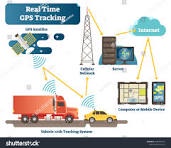In today’s fast-paced world, the use of GPS (Global Positioning System) technology has become ubiquitous, revolutionizing various industries and everyday life. Whether it’s tracking your fitness activities, navigating through city streets, or monitoring fleets of vehicles, GPS tracking systems play a pivotal role. But how do these systems actually work? Let’s embark on a journey to uncover the inner workings of GPS national tracking system and explore its significance in modern-day applications.
Understanding the Basics of GPS:
At its core, GPS is a satellite-based navigation system comprised of a constellation of satellites orbiting the Earth. Initially developed for military purposes, GPS has now become a civilian tool. It offering precise location and time information anywhere on the globe. The system operates through a network of 24 satellites. They ensure that a least of four satellites is visible from any point on Earth at any given time.
Triangulation: The Crucial Idea
Triangulation is the core idea underlying GPS tracking system. Every satellite transmits signals that contain data about its position as well as the exact moment the signal was sent. Based on the time it takes for the signal to reach the receiver, a GPS receiver, like the one in your car or smartphone, determines the distance to each satellite when it receives these signals.
Through a process called trilateration, the GPS gadget can pinpoint its exact location by timing the arrival of signals from many satellites. The accuracy of the position fixes increases with the number of satellites the gadget can talk with.
Increasing Accuracy with Differential GPS:
In addressing potential impediments to GPS precision, particularly in crowded urban areas or locations with obscured skies. The utilization of Differential GPS (DGPS) becomes crucial. DGPS employs a fixed reference station with established coordinates that scans for GPS satellite signals. By comparing their estimated and known positions. These reference stations increase the accuracy of GPS receivers nearby by broadcasting correction signals.
Real-World Applications:
GPS tracking devices have a wide range of practical uses. GPS makes it possible to track cars in real time, optimize routes, increase fuel efficiency, and improve fleet management in the transportation industry. Turn-by-turn directions are provided by GPS-equipped devices to users. They make it easier for them to explore uncharted territory when using personal navigation. Additionally, asset tracking, animal monitoring, search and rescue missions, and even tracking the movements of endangered species for conservation initiatives can all enjoy the use of GPS tracking system.
Conclusion GPS Tracking System:
In conclusion, the functionality of a GPS tracking system revolves around the seamless interaction between satellites, receivers, and advanced algorithms. By leveraging the principles of triangulation and trilateration, GPS devices provide accurate positioning information, empowering individuals and organizations with invaluable location-based insights.
As we continue to witness technological advancements, the role of GPS tracking systems is bound to expand further. It shaping the future of navigation, logistics, and numerous other fields. Embracing this technology not only enhances operational efficiency but also opens doors to innovative solutions that redefine the way we perceive space and location.
Understanding the intricacies of how GPS tracking systems work sheds light on their significance in our connected world, making them indispensable tools for businesses, governments, and individuals alike.
Read more https://theamberpost.com/


No comments yet